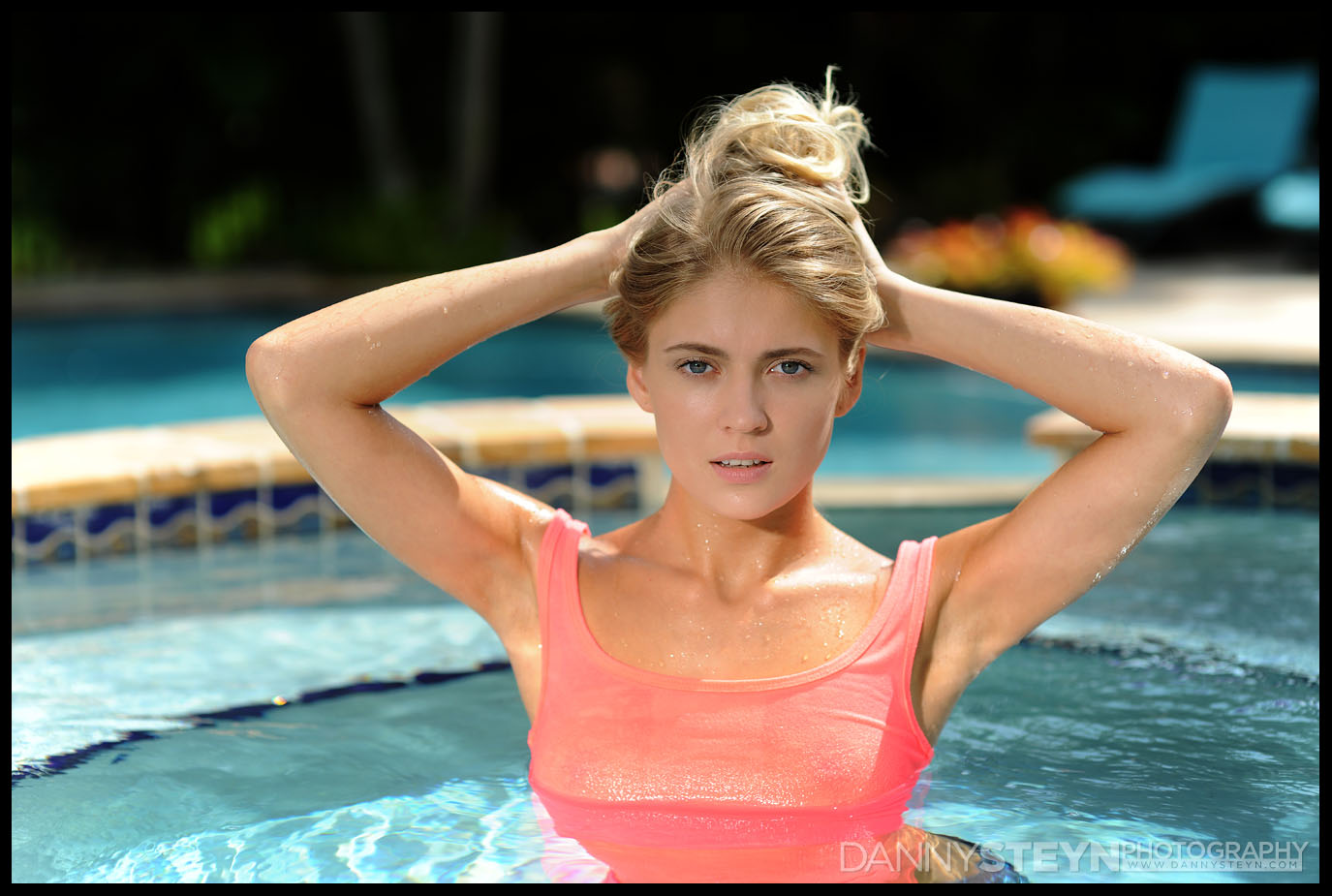Well Hypersync works for me ….. well sort of!
As mentioned before in my previous blog posts regarding hypersync, my main objective was to be able to use wide open apertures around F2.8 in bright sunlight, and use flash to fill the shadows. Shooting at wide open apertures with long lenses provides the shallow depth of field that makes the model “pop” off the blurred background. But shooting at the maximum sync speed allowed by the camera, typically around 1/250th of a second, in bright sunlight, means that you have to stop the aperture down to around f8 and this unfortunately brings the background back into focus.
You can see my previous hypersync testing approach here
So after collating my previous test data I continued my testing, this time using a live model, the adorable Latvian model Diana, who was a total pleasure to shoot with and who was patient as I experimented with various settings and lighting combinations.
Determining the ambient exposure for optimum background saturation
We shot outdoors at our pool, and I started with a simple exposure test at 100 ISO and F2.8 and the shutterspeed needed to get the background saturation I wanted was 1/2,000th of a second seen in the image below.

Hypersync testing with Nikon D3x and up to 3 Alien Bees 640WS flash heads in bright sunlight
So while the sun was out, most of my shooting was done with shutter speeds in the range of 1/1,600 – 1/3,200th second. Later on a storm cloud darkened the sky and the ambient light dropped around 4 stops so I had to slow down the shutterspeed so as not to completely underexpose the background.
I started off using the Alien Bees at full power as in my earlier testing this had yielded the best results. With all three flash heads connected I found the system quite unreliable, and it was quite a process of un-plugging, re-plugging all the connections to try and get all three units to sync and fire at full power. And most bizarely, the lower shutter release on my Nikon D3x would not allow the three units to sync at all, I had to use the upper shutter release which is a pain when shooting portrait format.
With the 3 heads at full power there was a lot of flash-to-model distance adjustment going on and it definitely killed the flow. And of course I had to allow several seconds between each shot to allow the Alien Bees to fully recharge from each full power discharge. I ended up shooting way fewer images in the 3-hour shoot than I would have in my normal glamour shooting mode. This can be a good thing and a bad thing, sometimes you see something happening in the viewfinder that you just have to capture, but the flashes have not recharged, so as I say it can be a buzz kill on a shoot with a model who moves well from pose to pose.
The images below show shutter-speeds ranging from as slow as 1/1,000th all the way up to 1/2,500th of a second. I did shoot images at 1/4,000th and at 1/8,000th of a second, but the fall-off in flash illumination is dramatic, and of course the background ends up way too dark and loses the saturation and interest that I wanted to capture.








Hypersync Testing Summary to date.
I am sure you noticed the “well, sort of…” comment in my opening line. Yes, Pocket Wizards’ Hypersync functionality definitely allowed me to shoot at shutter speeds up to 4 stops faster than the maximum camera flash sync speed without any noticeable banding. And overall I am thrilled not only with the results in my limited testing to date, but I am more excited about the possibilities to brings to our studio and our customers.
However throughout the four tests I have conducted to date, the Pocket Wizard hypersync system proved to be pretty unstable, and would give widely differing results image to image. And this occurred in all four tests conducted to date. Apparently I am not the only one experiencing this phenomenon according to my reading.
Mounted on the hotshoe of my Nikon D3x I had the Pocket Wizard MiniTT1 transmitter with the AC3 Zone Controller to adjust the flash power. On the Alien Bees I had the Pocket Wizard FlexTT5 transceivers with the AC9 Alien Bees Adapter, and I had a dummy plug inserted into the sync socket to ensure that the Flashes were not firing in slave mode. All batteries were fresh and I was powering the Alien Bees direct from the mains.
I also experimented with the AC3 controller adjusting the flash outputs. This did not go well and the output was not consistent across all the flash units despite multiple corrections, plugging and unplugging. I have no idea what was causing the instability. Something that will require some more experimenting.
At this point I am not comfortable using hypersync on a commercial shoot as it is too unreliable. But I am very excited with its potential and I am hoping that I can get the system stable enough to trust it in image-critical situations.
Maybe some other shooters can comment on their own observations………..
Click here to view my next Hypersync test utilizing Nikon D3x, Alien Bees, and Pocket Wizard Mini TT1 and Flex TT5 and the wonderful model Diana
